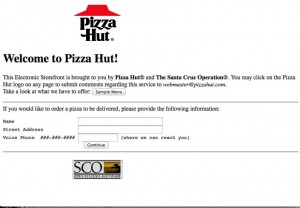Trust is integral to pretty much every aspect of our lives. Whether it’s a personal relationship, visiting a dentist or getting advice on where best to invest your money, you need to be able to trust that the person or people you are dealing with will be honest, reliable and authentic. Lack of trust will, inevitably, lead only to doubt and uncertainty.
The same applies in the business world; if consumers do not trust your brand, you’re more or less doomed to failure. Most organisations are attempting to flourish in a marketplace that is well-populated and challenging. That means that attracting, and of course retaining, loyal customers is vital.
Being able to forge a relationship with the consumer that positions you above rival operations is, to put it bluntly, key to success. You need people to pick your services or products instead of those on offer elsewhere, and the most effective way of doing that is by building a sturdy and resilient association based firmly on trust. So, how do we create that trust?
User-generated content
We at Southerly love creating. We enjoy the process of crafting a story, figuring out whether our content will work best as text, a piece of audio or a video clip – or perhaps all three – and then successfully pushing out our work to the world.
However, we also understand the growing significance of user-generated content (UGC). Reviews, testimonials and assessments from the general public are becoming increasingly influential, and undisputedly have the power to make or break a brand’s reputation.
Companies such as Amazon and Airbnb, for example, have UGC at the core of their business model, and have wrought huge success by allowing people to leave reviews that then encourage consumers to commit to a transaction.
Business success has, of course, always hinged on whether or not people make the decision to purchase a product or service, but the boom in UGC means people are now making their decisions based not necessarily on their own experiences, but on the say-so of their peers.
And what’s more, brands are also well aware of how powerful UGC can be. According to research by OfferPop, 65% of brands believe that UGC is more influential than brand-produced video and images, while 93% of consumers say they find UGC very helpful when making purchasing decisions.
Reviews, testimonials and assessments from the general public are becoming increasingly influential
Watch and learn
Here’s an impressive statistic for you; user-generated videos get 10x more views than brand-owned content. Not impressed? Views don’t necessarily increase the bottom line, so I see where you’re coming from. But what if I told you that user-generated video content increases brand sales effectiveness by nearly 20%? Do I have your attention now?
User-generated videos have one huge advantage over those created by brands, and that’s that they are not openly trying to sell you something. Video produced by a retailer, for example, has an obvious agenda; they want the consumer to purchase their product. That immediately sets alarm bells ringing in the mind of the person being preached to – how can they have faith in what a brand is saying when their end goal is simply to get your money?
In contrast, user-generated videos are generally seen as more informative and, to some extent at least, neutral. A study carried out by Reevoo concluded that seven in ten consumers value peer recommendations and reviews above in-house content, while an estimated eight in ten B2C companies say they are planning to launch user-generated content this year.
However, while statistics such as these seem to highlight the virtue of UGC, we are by no means saying that UGC should replace traditional content creation. Interestingly, a recent piece of research by comScore found that when using a combination of both paid content and UGC to promote a product or service, conversion rates go up by an average of 28%.
Seven in ten consumers value peer recommendations and reviews above in-house content
It’s also worth pointing out that it’s by no means a certainty that UGC will always show your brand in an affirmative light. If your products or services are deficient or fall down when compared to those offered by your competitors, people will not hesitate to make that known. UGC is, after all, about providing an opinion that can be trusted: whether that opinion and positive or negative is all to do with the quality of what the business is offering.
The Patagonia example
No, we’re not talking about the sparsely populated region at the southern tip of South America – the Patagonia in question here is the American clothing company that specialises in high quality coats, jackets and all manner of hipster apparel.
Back in 2011, Patagonia decided to launch a series of advertisements for Black Friday; hardly a surprising move for a retailer, you may think. However, the content of this particular campaign was anything but a routine sales pitch – instead of encouraging people to open their wallets and grab a bargain, the company urged consumers to refrain from spending.
An interesting – and rather unorthodox – tactic, but one Patagonia decided to put its weight behind. Why? Well, there’s a very good reason, and it acted as a fantastically effective means of building consumer trust through transparent and impassioned messaging.
Patagonia wanted to raise awareness of the fact that we are, as a society, consuming far more than we need. We buy often just for the sake of buying, and think little of throwing away materials without first considering the ecological impact.
Their ‘Don’t Buy This Jacket’ campaign asked people to cut down on impulse purchases and only buy things they genuinely need. Their advert then went on to detail the environmental cost of assembling just one of their own jackets, using this production journey to stress how damaging the manufacturing process can be.
Similarly, the company’s blog – The Cleanest Line – rarely mentions the company’s products. Instead, it is used as a means of highlighting environmental problems and supporting the efforts of campaigners.
The company’s outwardly green stance is supremely effective in building trust with customers because it not only displays strong ethics, but it treats the consumer with respect. The individual is not having advertising shoved down their throat; rather, they are being fed interesting and informative material that they appreciate and value. Indeed, very recently the multinational conglomerate Unilever revealed the results of a survey of 20,000 global consumers, suggesting that 33% now actively choose to buy from brands they think are sustainable, and 21% are more likely to choose brands that promote sustainability in their marketing.
The core message of working for a greater good has certainly resonated with Patagonia’s customers, and the company is going from strength to strength financially. On the Black Friday, which saw Patagonia launch its ‘Don’t Buy This Jacket’ adverts, the company saw sales increase by 42%, while the website had a 61% increase in consumer activity.
Patagonia’s strategy is not to lure customers to their website with low prices and fancy slogans, but to give them honesty coupled with a meaningful message. This technique garners trust while also promoting the value of choosing quality over quantity. Together, these fundamental business principles have helped Patagonia build an incredibly loyal set of repeat customers.
Consumers choose brands that promote sustainability in their marketing
You get the picture
Did you know that consumers are seven times more likely to trust social content over advertising? Research recently carried out by Olapic, a leading content curation platform, found that people are far more inclined to trust social media images that feature ‘real people’ than traditional advertising that utilises celebrity endorsement or stock imagery.
Olapic’s report – ‘Consumer Trust: Keep It Real’ – surveyed 4,578 active social media users between the ages of 16 and 49, and discovered that trust plays a huge role in turning prospective consumers into paying customers.
The majority (56%) of those surveyed said they would be far more likely to click on an ad if it contained a user-generated photo, while a massive 70% of American respondents said they would be more likely to commit to a purchase if they saw a relatable consumer post online.
People are far more inclined to trust social media images that feature ‘real people’
The thirst for user-generated content is very real, and strong testimonials have the potential to bring about a positive financial impact. Olapic’s study notes that half (49%) of people are far more likely to buy a product if it has been given the thumbs up from a real person, while over half (54%) admit they have previously shared news of a purchase using a brand’s hashtag if they have had a particularly positive experience.
The phrase ‘the customer is king’ has never been so apt. Without their validation – be that via social media, forums, word of mouth or in the form of a review – you will be fighting an uphill battle when attempting to forge trust and build audience relationships.
Keep the customer in mind always. Anticipate their needs, give them what they want, treat them respectfully, and help them overcome issues quickly. We are living in a world where word spreads fast, and it’s your mission to ensure every mention of your business is synonymous with trustworthiness.
Business & Finance Articles on Business 2 Community
(49)






